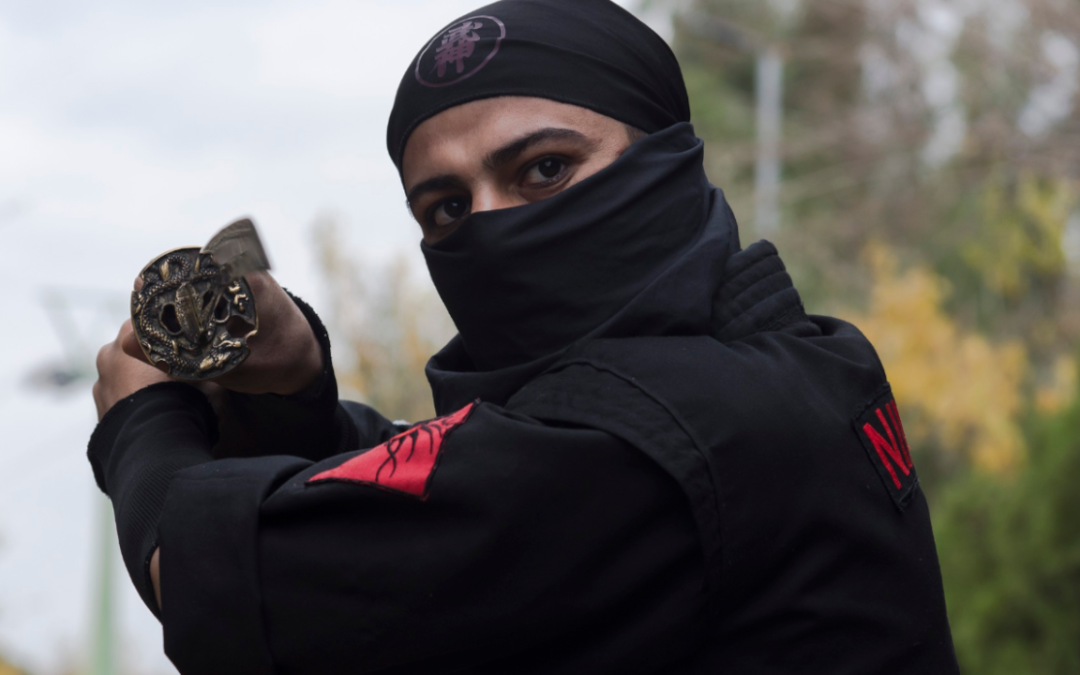There is a long history of martial combat. As far back as historic records go – and probably even further – humans have been attempting to develop combat systems. This happens on every continent inhabited by our species and within every known culture. But not all are equal. Over time, some martial arts are left behind, largely as more effective combat systems take hold and grow in popularity. But some forgotten martial arts are genuinely interesting. So I thought it would be worth writing an article on ten of the most fascinating forgotten martial arts. Here it is, from modern combat systems overshadowed by their more successful siblings, to ancient lost arts.
10: Bartitsu
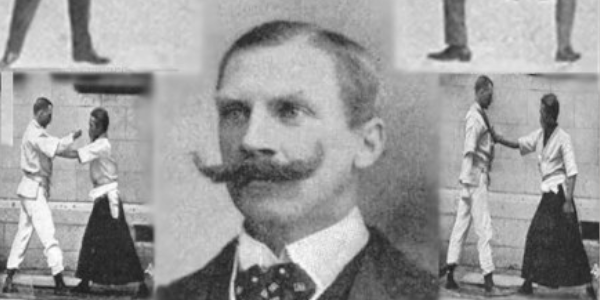
Bartitsu is a martial art that was developed in the late 19th and early 20th centuries by Edward William Barton-Wright, a British engineer who had studied jujitsu in Japan. Bartitsu is a blend of several different martial arts styles, including jujitsu, boxing, cane fighting, and savate – as well as some other now forgotten martial arts. The art was developed as a self-defense system for the upper class gentleman, and it was designed to be effective against larger opponents. It teaches students how to use their body weight and leverage to their advantage, and how to use improvised weapons for defense. One of the unique aspects of Bartitsu is its emphasis on “scientific” self-defense. Barton-Wright believed that martial arts techniques should be based on principles of physics and human anatomy, rather than just on tradition or superstition.
He also believed that martial arts training should be combined with physical conditioning and cardio workouts to create a well-rounded athlete. Bartitsu training typically includes a variety of drills and exercises, such as sparring, partner drills, and scenario-based training. It is a physically demanding martial art, and students can expect to undergo intense physical conditioning as part of their training. Bartitsu fell out of popularity in the early 20th century, but it has experienced a resurgence in recent years due to its inclusion in the Sherlock Holmes stories written by Sir Arthur Conan Doyle.
9: Kapap
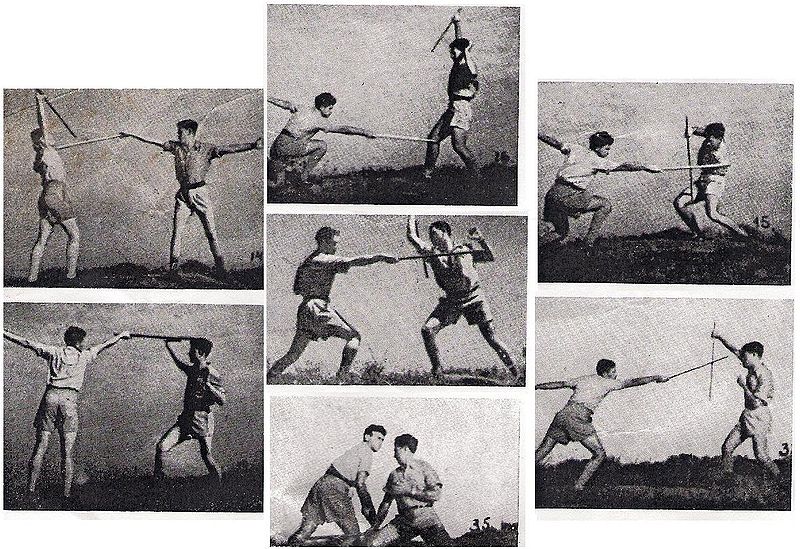
Kapap is a Hebrew acronym that stands for “face-to-face combat.” It is a martial art developed by the Israeli Defense Forces for close combat and self-defense situations. The origins of Kapap can be traced back to the 1930s and 1940s, when it was developed by wrestling and judo champion, Imi Lichtenfeld. Lichtenfeld was a member of the Haganah, a Jewish paramilitary organization in Palestine that later became the IDF. He saw the need for a martial art that could be used effectively in close combat and street fighting situations, and so he developed Kapap as a blend of various martial arts styles, including wrestling, judo, boxing, and street fighting techniques. Kapap focuses on practical self-defense techniques that can be used in real-world situations.
It teaches students how to defend themselves against armed and unarmed attackers. The techniques taught in Kapap are designed to be quick and efficient, with an emphasis on neutralizing threats as quickly as possible. In addition to self-defense techniques, Kapap also includes training in situational awareness. This helps students stay calm and focused and make quick and effective decisions. Kapap training typically includes a variety of drills and exercises, such as sparring, partner drills, and scenario-based training. It is a physically demanding martial art, and students can expect to undergo intense physical conditioning as part of their training.
8: Mau Rākau

Mau Rākau, also known as Māori martial arts or Māori weaponry, is a traditional martial art of the Māori people of New Zealand. It is a fighting system that incorporates weapons and unarmed techniques, and it has a rich history dating back to ancient Māori times. Mau rākau is based on the principles of warrior-hood and the traditional Māori concept of “tika” which means correct. It teaches how to use weapons such as a long wooden staffa short club, and a stone club for both defence and offence. It also includes unarmed techniques such as punches, kicks, and throws.
In addition to teaching fighting techniques, mau rākau also includes elements of traditional Māori culture. It is usually taught within a cultural context, with a focus on preserving and sharing the traditional knowledge of the Māori people. Mau rākau training involves a variety of drills and exercises, such as sparring, partner drills. It is a physically demanding martial art, and students can expect to undergo intense physical conditioning as part of their training.
7: Combat Hopak
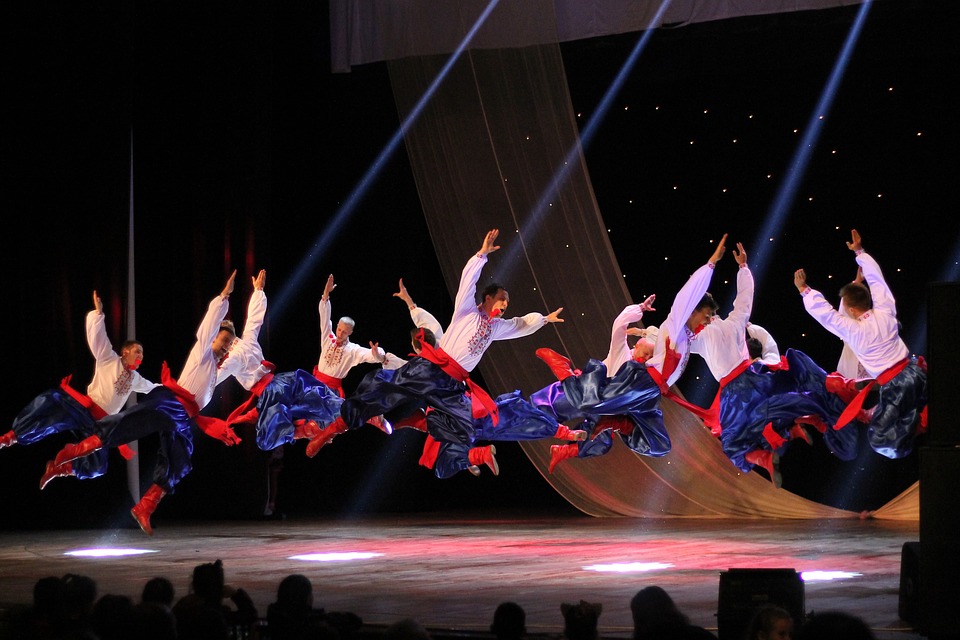
Combat Hopak is among the most recent of forgotten martial arts. Interestingly, it is a combat system that combines elements of traditional Ukrainian dance with self-defense techniques. It is also known as Hopak Combat or Boyovyy Hopak. The origins of Combat Hopak can be traced back to the traditional Ukrainian dance called Hopak. The dance has a long history dating to the 16th century. The dance is known for its acrobatic movements and is often performed at cultural festivals and events. In the 1990s a group of Ukrainian martial artists and dancers decided to combine the physical and technical elements of Hopak with self-defense techniques to create a martial art that could be used for both recreational and practical purposes. The result was Combat Hopak.
The training in Combat Hopak boasts a combination of physical conditioning, technical drills, and sparring. The goal of the martial art is to develop a high level of physical fitness, agility, and coordination, as well as the ability to defend oneself in a variety of situations. One of the unique aspects of Combat Hopak is that it incorporates traditional Ukrainian folk dance elements into its training and sparring. This includes the use of music and specific dance steps, as well as the use of traditional Ukrainian weapons such as the saber and cossack whip.
6: Dambe
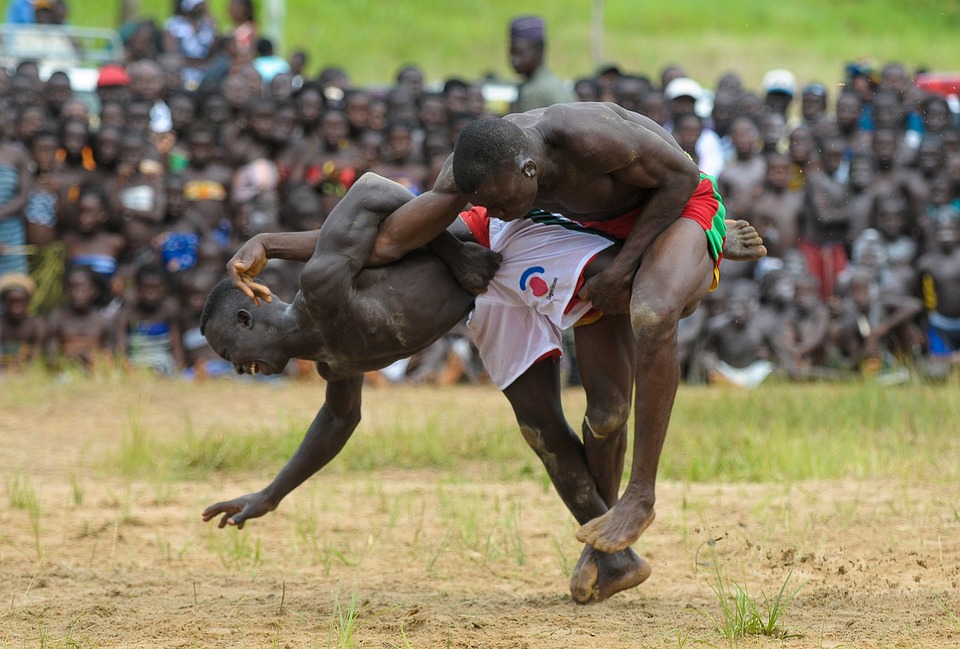
Dambe is a traditional West African martial art that originated among the Hausa people of Nigeria and Cameroon. It is characterized by its use of a wooden club called a dambe. Traditionally, the club is made from the wood of the dangaladima tree. Dambe was originally used by Hausa warriors as a means of training for combat, and it remains an important part of Hausa culture to this day. In dambe matches, two fighters, known as “dambe wrestlers face each other. Each are armed with a dambe.
Typically held in an open space, such as a town square, they are accompanied by music and singing. The fighters are also often adorned with tattoos and other body decorations, which are believed to convey strength and courage. In addition to its use as a martial art, dambe is also a form of entertainment and a way for young men to demonstrate their strength and courage. It is not uncommon for dambe wrestlers to receive gifts, such as money or livestock, from those who have witnessed their matches.
5: Angampora
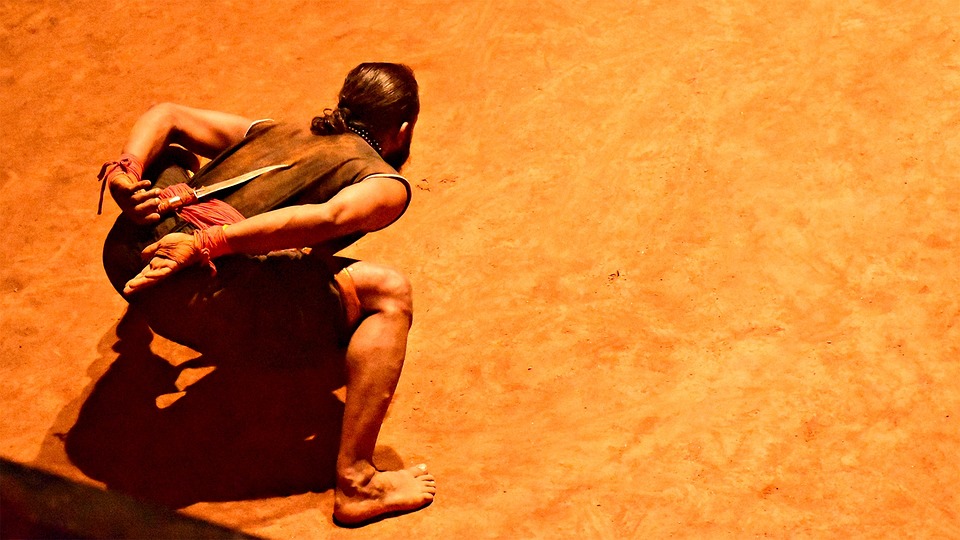
Angampora is a traditional martial art that originated in ancient Sri Lanka. It is characterized by its focus on hand-to-hand combat, as well as the use of various weapons such as knives, swords, and sticks. Angampora has a long and storied history, with roots dating back to at least the 8th century CE. It was originally practised by the Sinhalese people of Sri Lanka as a means of training for warfare, and was also used for personal protection and for settling disputes. In angampora matches, two fighters, known as “pehatharis,” face off against each other in a predetermined area.
The aim of said match is to knock the opponent unconscious or force them to submit. Angampora matches are typically accompanied by music and chanting, and are often held in a ceremonial or ritualistic setting. Angampora is also an important part of Sri Lankan culture and history. It is often passed down through generations of families, and is seen as a way of preserving and promoting the cultural heritage of the Sinhalese people. The reason Angampora are largely forgotten martial arts is that it was supressed while Sri Lanka was under British control.
4: Tahtib
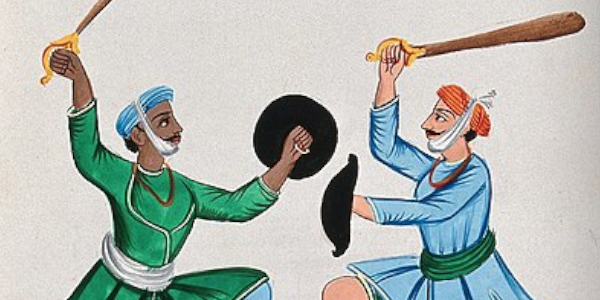
Tahtib is a traditional Egyptian martial art that involves the use of a stick or cane as a weapon. It is believed to have originated in ancient Egypt, where it was used by soldiers to train for battle. Today, Tahtib is still practiced in Egypt and other parts of the Middle East, as well as in other parts of the world, where it is often taught as a form of cultural expression and physical fitness. The word “Tahtib” comes from the Arabic word “taht,” which means “stick.” Needless to say, this art involves using a stick, usually made of wood or bamboo, to defend oneself against an opponent. The stick is typically about the same length as the practitioner’s arm and is held with both hands.
I like to imagine there is a whole slew of forgotten martial arts from ancient nations like Egypt. It just so happens that some others have left no historical record. Tahtib practitioners also use their feet and legs to defend themselves and attack their opponents. They may use kicks, sweeps, and other techniques to knock the stick out of their opponent’s hand or to disarm them. In addition, practitioners may use their bodies to block and deflect attacks, as well as to create openings for counter attacks.
3: Muay Chaiya
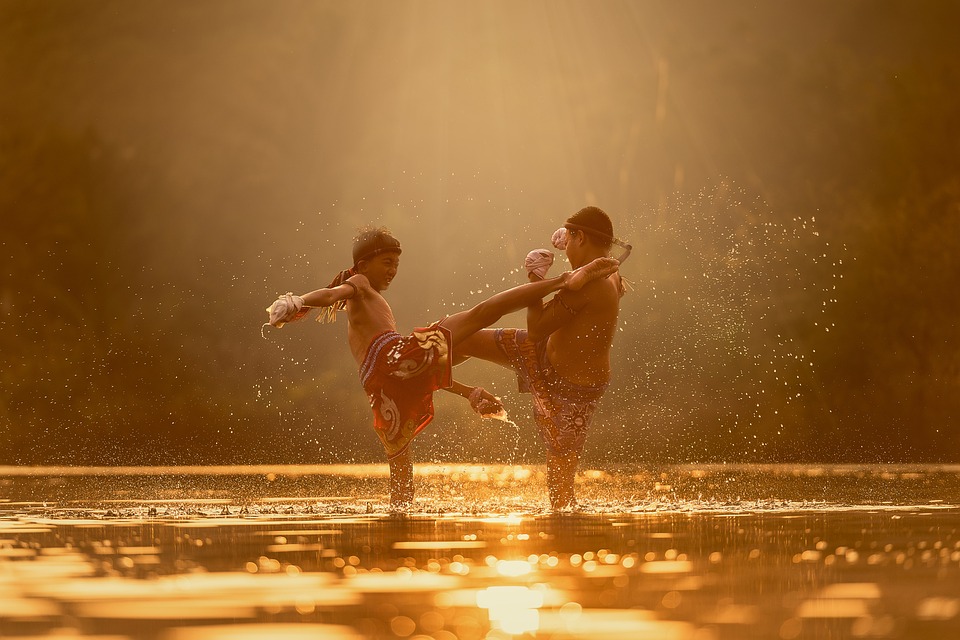
Muay Chaiya is a traditional martial art from Thailand that combines elements of Muay Thai with the movements and techniques of Chaiya, a southern Thai province. The art is known for its fluid movements and its use of the entire body as a weapon. The word “Muay” means fight in Thai, while “Chaiya” refers to the city in southern Thailand where the art originated. Muay Chaiya practitioners use their fists, elbows, knees, and shins as weapons, as well as throws, locks, and other techniques to take down an opponent. So the art form is indeed very similar to Muay Thai.
The art also incorporates traditional Thai dance movements, which are believed to have been incorporated to help practitioners develop balance, coordination, and grace. Competitions are typically done in a ring, similar to other martial arts styles. The goal of the competition is to either knock out the opponent or to score points through successful strikes and techniques. Points are awarded for various techniques, such as punches, kicks, elbows, and knees, as well as for successful throws and locks.
2: Bokator

Bokator is a traditional Cambodian martial art that has a long history going back over 1,000 years. It combines elements of various martial arts styles, including boxing, wrestling, and judo, as well as the use of weapons such as sticks and knives. Bokator practitioners use their hands, feet, elbows, knees, and head as weapons, as well as throws, locks, and other techniques to take down an opponent.The word “Bokator” comes from the Khmer language and means “pounding a lion.” The art is known for its powerful and aggressive movements, as well as its use of the entire body as a weapon.
Bokator practitioners are trained to use their bodies in a variety of ways, including to strike, block, and defend themselves against attacks. In Bokator, practitioners are taught a set of basic techniques, known as “labokator,” which form the foundation of the art. These techniques include punches, kicks, elbows, knees, and head strikes, as well as throws and locks. Students also learn how to use weapons, such as sticks and knives, as well as how to defend against these weapons.
1: Pankration
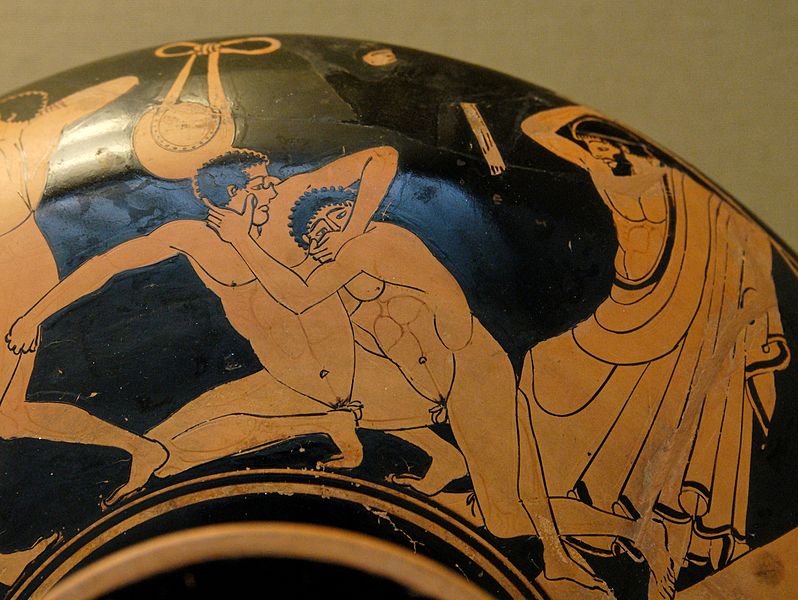
Sometimes called the original MMA, Pankration is an ancient martial art from Greece that combines elements of boxing and wrestling. In a sense it is the father of all forgotten martial arts. The word “pankration” comes from the Greek words “pan,” meaning “all,” and “kratos,” meaning “strength.” The art was developed as a way for soldiers to train for battle, and it was also a popular event in the ancient Olympic Games. Pankration practitioners use their hands, feet, elbows, knees, and head as weapons, as well as throws, locks, and other techniques to take down an opponent. The art also incorporates elements of ground fighting, allowing practitioners to fight from a standing position or from the ground.
This versatility makes Pankration a well-rounded martial art that can be effective in a variety of situations. In Pankration, practitioners are taught a set of basic techniques, known as “arche,” which form the foundation of the art. These techniques include punches, kicks, elbows, knees, and head strikes, as well as throws and locks. Practitioners also learn how to defend against these techniques and how to counterattack effectively. Even Alexander the Great is said to have practice Pankration.

